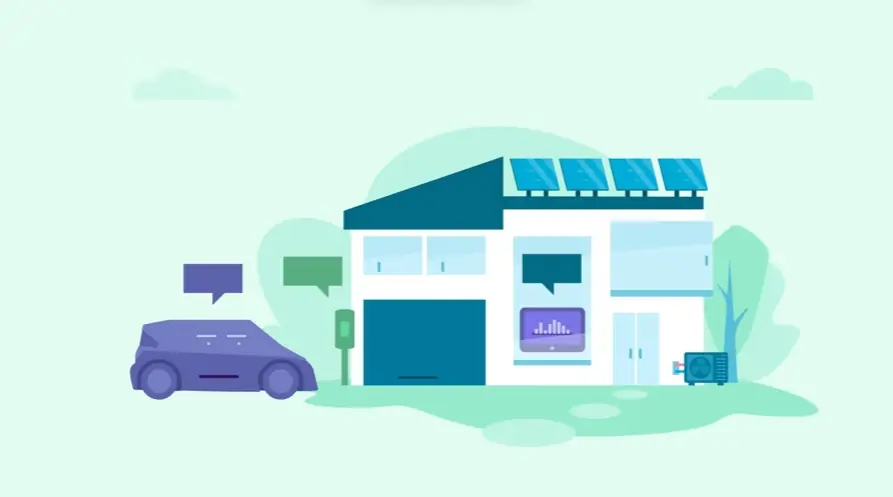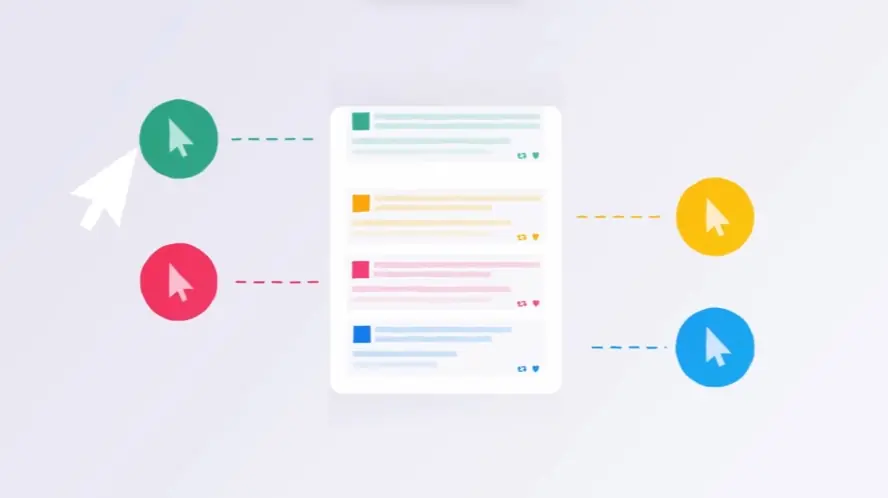Mastering Software Orientation Video Effectiveness
Bridging from the foundational understanding of what a Software Orientation Video is and its crucial role, let's now sharpen our focus on mastering their effectiveness. These videos are more than just digital manuals; they are the user's first guide to finding value and feeling confident. It’s about guiding users seamlessly from their initial interaction to successfully accomplishing their key goals, ensuring they quickly experience the software's promised benefits. Teams dedicated to fostering positive user experiences understand this critical distinction and invest in getting it right.
Achieving mastery in software orientation means adopting a deeply user-centric strategic approach. Teams meticulously map the typical new user's journey, identifying the most common and critical initial tasks. Prioritizing only the 3-5 core features that deliver immediate, tangible benefits is paramount, actively avoiding the common pitfall of overwhelming viewers with too much information upfront. Ultimately, effectiveness is measured in tangible outcomes beyond just view counts, focusing on metrics that reflect successful user progression and reduced friction.
Teams focusing on effectiveness map their videos directly to the typical user journey, guiding viewers step-by-step through the essential first actions needed to gain value.
They understand viewers need to see the value proposition quickly; prioritizing features that offer immediate benefit ensures viewers remain engaged and understand the software's relevance.
Implementing robust accessibility features, including accurate closed captions and searchable transcripts, ensures the guidance is available and useful for a wider, more diverse audience.
Success metrics include not just video viewership or completion rates but crucially, a measurable reduction in support tickets related to basic usage questions, signaling improved user self-sufficiency.
By rigorously applying these user-focused techniques, teams can transform standard introductions into highly effective tools. This empowers users with confidence, accelerates successful adoption, and ultimately strengthens the relationship between the user and the software from the very beginning.
Why Advids for Software Orientation Video?
At Advids, we create compelling software orientation videos that drive results. Our blend of creative storytelling, advanced technology, and proven experience ensures your vision translates into effective animation. We've completed over 3400 successful projects across various video types, and now we're focusing that expertise on Software Orientation.
Why Choose Advids for Your Software Orientation Needs?
Deep Industry Experience: With 12+ years of experience and over 3400 clients served, including industry leaders like Razorpay, Ola, Mercedes, the United Nations, Continental, and Mercer, we understand what makes a video truly effective. We've successfully delivered between 185 and 470 Software Orientation Videos specifically.
Client-Focused Approach: Our 109+ five-star Google reviews speak to our dedication to client satisfaction. We prioritize collaboration and communication, ensuring your vision is at the heart of every project.
Results-Driven Animation: We leverage cutting-edge technology and creative storytelling to craft Software Orientation Videos that engage your audience and achieve your business objectives.
What We Offer:
Customized Solutions: From explainer videos to character animations, we tailor each Software Orientation Video to your specific needs, brand, and target audience.
Creative Storytelling: Our talented team of animators and storytellers develop captivating narratives that resonate with viewers and drive action.
Advanced Technology: We utilize industry-leading software and techniques to create visually stunning and impactful Software Orientation Videos.
Partner with Advids:
Collaborative Process: We work closely with you throughout the entire process, from concept to completion, ensuring your vision is realized.
Strategic Communication: We prioritize clear and open communication to understand your goals, target audience, and brand identity, resulting in truly effective Software Orientation Videos.
Ready to unlock the potential of Software Orientation Video for your business with the latest video design trends of 2024? Let Advids be your trusted partner in transforming your ideas into engaging and effective animated experiences.
Checkout some of the projects and work our team at Advids has been producing:
What is a Software Orientation Video?
A software orientation video is a short, engaging video that introduces users to a new software product. It provides an overview of the software's features, benefits, and functionality, helping users understand how it can address their specific needs. These videos are often used as part of the onboarding process, guiding users through the initial steps of using the software.
Software orientation videos are used in various ways, including product demos, onboarding tutorials, and feature highlights. They can be used to educate users about the software's capabilities, demonstrate how it works, and address common user queries. These videos are a valuable tool for improving user engagement, reducing support requests, and ultimately driving product adoption.
What do top Software Orientation Videos have in common?
Craft compelling software orientation videos by focusing on user needs and showcasing the software's value proposition effectively.
Ideal User Profile - Tailor the video's language and pace to the audience's tech proficiency.
- Software Functionality Overview - Highlight unique selling points and competitive advantages.
- Intuitive User Journey - Use on-screen annotations and visual cues to guide viewers.
- Core Feature Showcase - Prioritize features offering the greatest value proposition.
- Addressing User Pain Points - Use relatable scenarios to connect with viewers' experiences.
- Measurable Success Indicators - Track metrics like watch time, click-through rates, and conversions.
- Engaging Visual Demonstrations - Use smooth transitions and clear visual hierarchy.
- Real-World Application Scenarios - Showcase diverse user profiles and industry applications.
- Clear Call to Action - Use strong verbs and create a sense of urgency.
- Visually Appealing Design - Use a consistent color palette and typography.
What makes Software Orientation Video effective?
Clearly articulate the softwares core value proposition early, visually demonstrating its key benefits through high-quality screen recordings. Use animations strategically to clarify complex processes or highlight key features, supplementing?not replacing?screen recordings of actual software use. Integrate interactive elements, such as clickable hotspots within screen recordings or brief quizzes at logical breakpoints, to enhance engagement and knowledge retention.
Explicitly state user goals at the outset and consistently demonstrate how the software facilitates their achievement throughout the video. Craft a compelling narrative arc, following a typical user journey from initial need to successful task completion, showcasing software features within this context. Maintain a brisk pace using dynamic editing and concise language, avoiding information overload by focusing on key features and user actions.
End with a clear, actionable call to action, providing specific next steps and linking to relevant resources. Adapt the videos tone, style, and language to resonate with the target audiences technical expertise and experience level, using appropriate terminology and visual cues. Prioritize high production values, including professional voiceover, crisp visuals, and a consistent visual style, to create a polished and professional impression.
Conduct iterative user testing throughout the production process, incorporating feedback to refine the videos effectiveness and ensure clarity.
How long should your Software Orientation Video be?
Optimize software orientation video length for maximum impact by aligning video type, content, and target audience stage.
Pre-production Considerations for Determining Video Length:
- What key features need demonstration?
- Which audience segment is targeted?
- What workflow steps are crucial?
- What is the software's core value?
- Does the video need a presenter?
- What visual style best suits the software?
- What platform dictates video length?
Software orientation video length guide
| Software Orientation Types | Video Length | Use Case | Funnel |
|---|
| Animated Explainer | 45-60 seconds | Clearly explains core software functionality using engaging visuals and concise narration, ideal for showcasing key features quickly and memorably. | Awareness |
| Live Action Demo | 1-2 minutes | Demonstrates software in use, highlighting key features and benefits through a real-world scenario, using a presenter to guide viewers. | Consideration |
| Screen Recording | 30-60 seconds | Focuses on specific software workflows, showing step-by-step instructions for common tasks, using clear on-screen annotations. | Consideration |
| Tutorial Walkthrough | 1-2 minutes | Provides in-depth guidance on specific software features, walking users through complex processes, potentially using a split-screen approach. | Conversion |
| Product Showcase | 1-1.5 minutes | Showcases the software's overall capabilities and benefits, highlighting its unique selling points, using dynamic visuals and compelling music. | Decision |
How to create Software Orientation Videos?
Crafting compelling software orientation videos requires a strategic approach that prioritizes user understanding and engagement. Mastering the pre-production and production phases is key to creating videos that resonate with your target audience and effectively showcase your software's capabilities.
* Define Audience - Understanding user personas ensures relevant content and effective communication.- Key Message - A strong core message provides focus and clarity, making the video impactful.
- Compelling Narrative - A narrative structure keeps viewers engaged and facilitates information retention.
- Video Structure - A well-structured video ensures a logical flow, enhancing user comprehension.
- Script Writing - A well-written script guides the viewer smoothly through the software's functionality.
- Screen Recording - High-quality screen recordings provide clear demonstrations of software features.
- Visual Elements - Visuals enhance understanding and engagement, making the video more memorable.
- Video Editing - Precise editing ensures a professional look and feel, improving viewer experience.
- Platform Optimization - Optimization for different platforms ensures maximum reach and accessibility.
Creating Accessible Software Videos for Diverse Audiences
Building on our previous discussion, let's explore how we can make software orientation videos accessible to everyone . Creating inclusive videos isn't just about ticking boxes; it's about ensuring everyone can understand and engage with your software, regardless of their abilities or background. Think about it – a well-crafted video can be a powerful tool, but only if it reaches its intended audience .
We've all experienced the frustration of a video with inaudible audio or unclear visuals . Now imagine that frustration amplified for someone with a disability. By prioritizing accessibility , we create a more welcoming and inclusive experience for all users. For instance, imagine a SaaS software video example with clear captions , enabling a deaf user to fully grasp the software's functionality.
By incorporating these accessibility features, we're not just creating videos; we're building bridges. We're fostering a more inclusive digital environment where everyone can learn, engage, and thrive. This benefits not only individual users but also expands the reach and impact of your software orientation videos.
Choosing the Right Animation Style for Software Videos
Choosing the right animation style for your software videos can feel like navigating a maze. Too many choices, too little guidance. We understand the struggle, and we're here to help you find the perfect path. Let's explore how different animation styles can elevate your software orientation videos, making them both informative and engaging .
We aim to empower you to choose animation styles that resonate with your audience and clearly communicate your software's value.
- 2D Animation: A versatile and cost-effective choice for diverse software training video examples , from onboarding new users to demonstrating complex features. Imagine a character navigating your software interface, guiding viewers through each step with engaging visuals.
- whiteboard animation : Perfect for simplifying complex concepts. Think of a hand drawing diagrams and icons on a whiteboard, breaking down intricate processes into easily digestible visuals. This style excels in software tutorial video examples where clarity is paramount.
- Motion Graphics: Bring data and statistics to life with dynamic visuals. Imagine charts and graphs animating seamlessly, highlighting key performance indicators and making data-driven insights more compelling, especially in application training videos.
- 3D Animation: For showcasing intricate product features and functionalities, 3D animation offers a realistic and immersive experience. Imagine a 3D model of your software rotating, allowing viewers to explore its design and capabilities from all angles. This is particularly effective for internal communication videos aimed at showcasing product innovation.
By carefully considering these animation styles and tailoring them to your specific needs, you can create software orientation videos that not only inform but also captivate and inspire your audience.
Using Data to Showcase the Value of Your Software
Following our discussion on accessibility, let's explore how data transforms software orientation videos from simple introductions into powerful persuasive tools. Imagine captivating your audience not just with features, but with tangible proof of your software's impact. Data-driven narratives resonate deeply, building trust and driving conversions.
We've all seen compelling product onboarding videos that showcase a software's value proposition instantly. Think about how impactful it would be to reinforce those visuals with concrete data points. Similarly, corporate training videos can leverage data to demonstrate the effectiveness of the training program, showcasing improvements in employee performance.
- Highlight key results: Instead of simply listing features, showcase quantifiable results. For example, "Reduce customer support tickets by 20%."
- Show, don't just tell: Use visuals like charts and graphs to bring data to life. A compelling visual representation can make complex data instantly understandable.
- Real-world impact: Anchor data in relatable scenarios. For instance, "See how our software helped Company X increase sales by 15% in just three months." Enterprise software video examples often use this technique to demonstrate value to potential clients.
- User testimonials: Combine data with user testimonials for a powerful one-two punch. Let satisfied customers share their success stories, backed by concrete data points.
By weaving data into your software onboarding video examples, you create a compelling narrative that resonates with viewers. This data-driven approach not only showcases your software's value but also builds trust and credibility with your audience. Remember, a well-crafted video, enriched with data, can be the key to unlocking your software's full potential.
Optimizing Software Videos for Different Platforms
Having explored accessibility, let's tackle optimizing software orientation videos for different platforms. Reaching the right audience means tailoring our approach to each platform's unique characteristics. Think about it – a video that shines on YouTube might fall flat on TikTok.
We need to consider not only the technical aspects but also the audience's expectations on each platform. For example, top software demo videos on LinkedIn often have a professional tone, while those on Instagram might be more playful and engaging. Remember, tailoring your content is key to maximizing impact.
Let's dive into some practical tips:
- Platform Requirements: Each platform has its own set of rules. YouTube thrives on landscape videos, while Instagram prefers square or vertical formats. Understanding these nuances is crucial for creating effective explainer video examples software.
- Mobile Optimization: Most people watch videos on their phones. Prioritize mobile-first design, ensuring your videos are easily viewable on smaller screens. Think vertical videos for TikTok and Instagram Stories.
- Length and Pacing: Attention spans vary across platforms. Shorter, snappier videos often perform better on platforms like TikTok, while longer tutorials can thrive on YouTube. Adjust the pacing and length accordingly.
- Accessibility for All: As we discussed, accessibility is paramount. Ensure captions and subtitles are available on all platforms, making your user adoption videos inclusive and reaching a wider audience.
By following these tips, we can ensure our software orientation videos resonate with viewers on every platform, maximizing engagement and driving results.
Balancing Visuals and Information in Software Videos
Having explored accessibility and platform optimization, let's dive into the heart of creating compelling software videos: balancing visuals and information. Think of it like a dance – too much information overwhelms, while too few visuals bore. We want to create an experience that's both informative and captivating. Remember those best software orientation videos you've seen? They all master this delicate balance.
Let's explore how we can achieve this harmony in our own software orientation videos. It's about creating an experience that's both informative and captivating. Think of those product demo video examples that instantly grab your attention – they're a testament to the power of visual storytelling.
- visual hierarchy : Guide your viewers' eyes. Imagine a spotlight highlighting the most important information on screen. This is visual hierarchy in action, ensuring a smooth, intuitive viewing experience.
- Show, Don't Just Tell: software explainer videos excel at this. Instead of lengthy explanations, use visuals to demonstrate functionality . A quick animation can often convey more than a paragraph of text.
- Storytelling: Weave a narrative that resonates. Even software feature videos can benefit from a touch of storytelling . Connect with your audience on an emotional level, making the information memorable.
- consistent branding : Maintain a consistent visual style throughout your video. Think of it as your software's visual signature, reinforcing brand recognition and creating a cohesive experience.
By mastering these techniques, we can create software orientation videos that not only inform but also captivate. It's about creating an experience that resonates with viewers, leaving a lasting impression and driving engagement.
Author & Editor Bio
A video producer with a passion for creating compelling video narratives, Jai Ghosh brings a wealth of experience to his role. His background in Digital Journalism and over 11 years of freelance media consulting inform his approach to video production. For the past 7 years, he has been a vital part of the Advids team, honing his expertise in video content planning, creation, and strategy.
His collaborative approach ensures that he works closely with clients, from startups to enterprises, to understand their communication goals and deliver impactful video solutions. He thrives on transforming ideas into engaging videos, whether it's a product demo, an educational explainer, or a brand story.
An avid reader of modern marketing literature, he keeps his knowledge current. Among his favorite reads from 2024 are "Balls Out Marketing" by Peter Roesler, "Give to Grow" by Mo Bunnell and "For the Culture" by Marcus Collins. His results-driven approach ensures that video content resonates with audiences and helps businesses flourish.




